In Defense of the Deadman Wonderland Anime
In the years since its release, the horror manga series Deadman Wonderland has acquired a small but extremely devoted fandom. The captivating series has a lot going for it, including: an engaging and fast-paced mystery plot, a multi-genre blend of gore, horror, drama, and comedy, a cast of diverse and colorful characters (none of whom are quite who they seem to be at first), and a surprising level of depth and maturity. In 2011, Studio Manglobe made a thirteen-episode anime based on the first five manga volumes, all of which encompassed the first major act of the series. This anime was licensed and dubbed into English by Funimation and aired on Toonami, where it quickly developed a cult following, and people started clamoring for a second season.
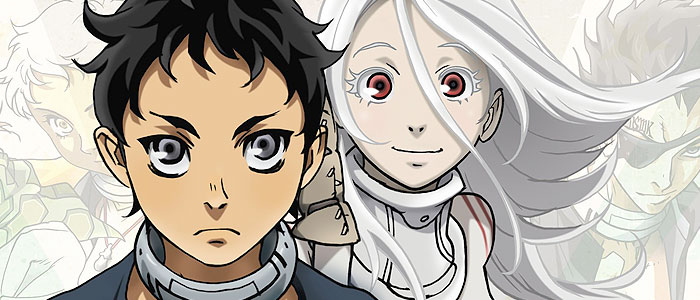
Virtually no one would argue that the anime was objectively better than the manga, and most fans who have experienced both will claim the opposite: that the anime is a shallow advertisement for the more complete manga. Most likely, however, the fans only say that because the manga tells a longer and more complete story than the anime does. On closer inspection, while the anime tells a truncated version of the story, ending on an ambiguous note that leaves much to be desired, it actually handles many of the specific details of world-building, character, and plot just as well as, if not better than, the manga ever did. Had the anime gone to the series’ natural conclusion, it very easily could have been the superior product all around.
World-Building Upgrades
Most of the action of Deadman Wonderland takes place in a large, high-tech prison of the same name. What makes this prison unique is that it doubles as a theme park, in which the prisoners function as staff and performers. The problem is, the most popular attractions at Deadman Wonderland are its gory murder games, which usually kill or maim the participants. In the basement of Deadman Wonderland is a place called G-Block, where the Deadmen–superhumans with the ability to use their blood as weapons–are kept.
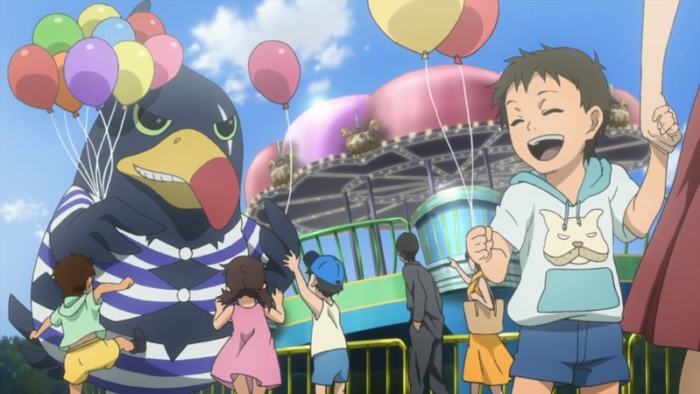
Overall, Deadman Wonderland operates less like a prison than like a police state, with its own laws, currency, and marketplace. G-Block even has its own secret police, known collectively as the Undertakers, who keep order amongst the Deadmen using extreme violence and special weapons that make them immune to their attacks. With all these different components to keep track of, it’s not surprising that every so often the manga will turn up a plot hole, or just a bit of local color that doesn’t seem to make much sense. The anime corrects as many of these as it can, although ambiguities still remain.
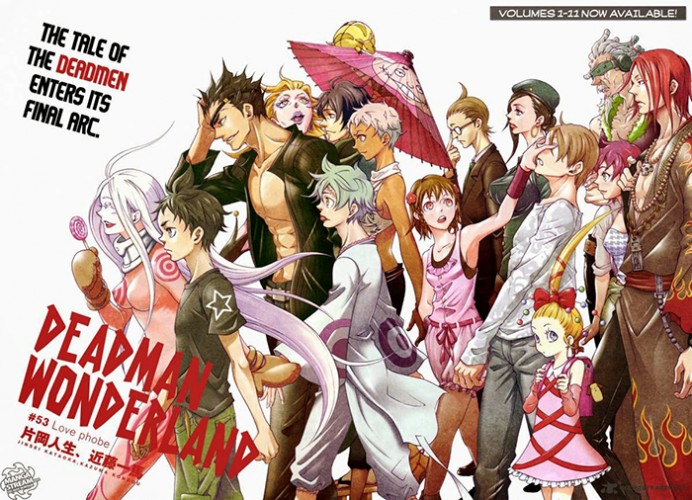
For example, when Ganta, the hero, first arrives in Deadman Wonderland after being framed for the gory murder of his classmates, one of the first friends he makes in the manga is a young girl named Azami, who is about the same age as him. She proceeds to take him under her wing and explain the day-to-day operations of Deadman Wonderland. She also offers to compete with him in a murder game known as the Dog Race, but has to drop out after being injured.
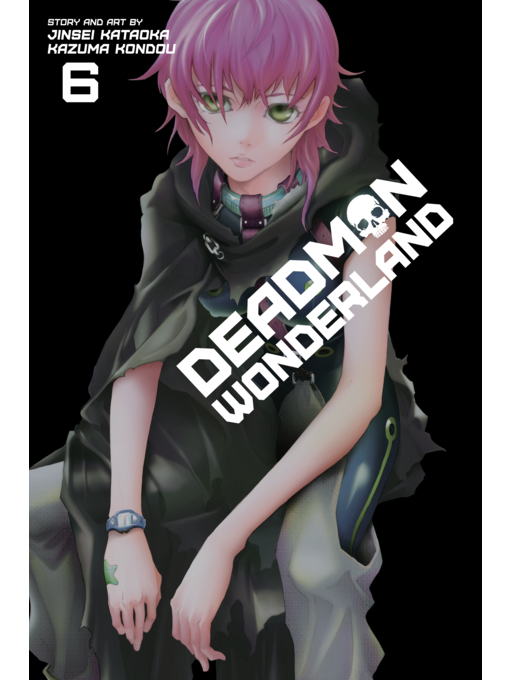
However, Azami never appears in the anime because she doesn’t serve a purpose until a later section of story, after the anime’s end. Instead, her role is taken by Yoh Takami, another prisoner whose sister, Minatsuki Takami, is one of the Deadmen. Yoh offers to show Ganta around and get him acquainted with the prison, but he’s also spying on him for Tamaki, Deadman Wonderland’s tyrannical overseer, in the hopes that he can convince Tamaki to let his sister go. Oddly enough, having Yoh fill this role makes a lot more sense. For one thing, it allows for a smoother transition to his later involvement after Ganta meets Minatsuki down in G-Block. In addition, since any normal prison would be segregated by gender, it stands to reason that Ganta would spend most of his time in the prison–at least before he got to G-Block–socializing with and competing against other males. G-Block, of course, is not segregated, but G-Block functions even less like a normal prison than the rest of the facility.
Another subtle improvement made by the anime concerns the character of Nagi, a Deadman whose pregnant wife–also a Deadman–was murdered after he threw a tournament to save her. The way this event is described in the manga, it seems as though they somehow met and got married while they were in prison, a feat that would most likely be somewhat difficult even given the relative freedom the Deadmen possess. The creators of the anime seem to have realized how little sense this made, because the scene of Nagi and his wife in their bedroom is, in the anime, transposed to a park bench outside, implying that they were together before they went to prison.
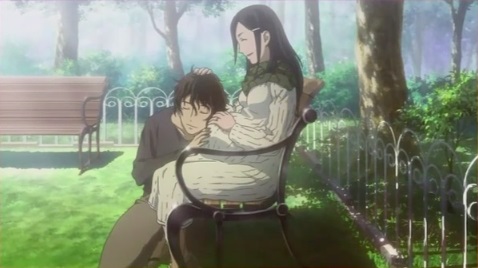
Character Tweaks
One of the biggest differences between the anime and the manga is the way that the story treats various characters. The manga is full of interesting characters, but doesn’t always handle them especially well. In this regard, the anime makes numerous changes for the better, fleshing the characters out and giving them a humanity they never had in the original version.
One of the most notable characters to undergo changes in the anime is Minatsuki, a teenage Deadman who became a misanthropic liar after her mother walked out on her family. Compared to the manga, the anime version of Minatsuki is a lot more unambiguously sympathetic–and in many respects a lot more fun. When Ganta first meets Minatsuki, she attempts to play upon his sympathy by claiming that her father abused her, and that she killed him in revenge. In the manga, Yoh later reveals that she lied about him abusing her, whereas the anime leaves it more ambiguous whether she was truly lying or not. When Minatsuki and Ganta are forced to fight against one another, she flings a variety of threats, taunts, and insults his way, and even attacks Yoh when he tries to defend her. The anime, far moreso than the manga, implies that her behavior is a performance and not how she really feels. Her insults and threats are so over-the-top in the anime–for instance, her line from the manga, “Try j–king off once you’re sliced up, dead, and soaking in formalin!” in the anime becomes “Why don’t you j–k off in a bottle of formaldehyde and call it our firstborn?!”–that she seems to be projecting a ruthlessness she doesn’t actually possess.
Specifically, her inability to kill Ganta in the anime looks a lot more like restraint than it does in the manga. In the manga her powers are always portrayed as relatively weak, but in a later anime episode she saves Ganta by killing several Undertakers at once with very little effort. The implication is that she could have killed Ganta at any time, and chose not to. She even shows some self-awareness, if not remorse, about how she ended up in prison in the anime. When Ganta asks her to help him rescue Nagi and escape from jail, she admits that one reason she doesn’t want to help is because “I’m actually guilty of what they busted me for.”
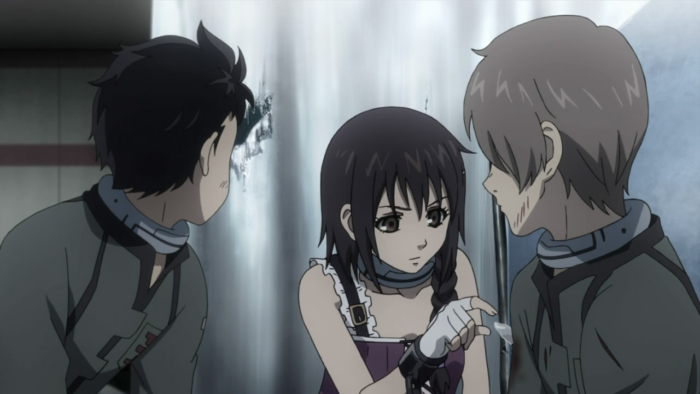
Of course, there is nothing intrinsically bad about the more morally-ambiguous stance Minatsuki takes in the manga. The problem is that, after her fight with Ganta, the series never really asks the audience to see her as anything but a hero ever again. In this regard, the anime does a much better job of showing she has what it takes to be a hero.
On the flipside, the minor villain Kazumasa Kosuji is actually less sympathetic in the anime than he is in the manga. He’s a cowardly bully in both versions, but in the manga he comes across as a lot more silly, spending most of his time in the Dog Race ordering his ineffectual underlings to kill Ganta so he can win. In the anime, by contrast, he’s portrayed as a greedy, violent chauvinist, who makes lewd comments even to Makina, the prison warden, and was originally sent to jail for punching a woman in the face after she refused to give him her phone number. During the Dog Race he also uses his own henchmen as human shields. He’s a lot more menacing, in part because he’s a lot more believable.
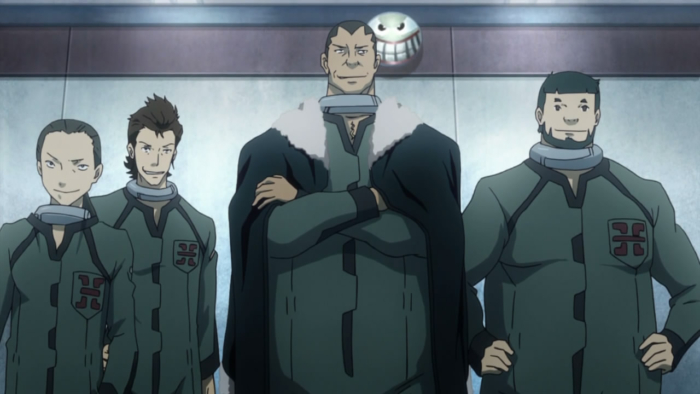
The Most Interesting Man
However, the one character who benefits from the anime’s attentions more than any other is probably Genkaku Azuma, the leader of the Undertakers. His entire worldview revolves around the idea that death is salvation; however, in the manga he seems to act this way simply because he’s a dark priest, whereas the anime does a much better job of integrating his worldview into his overall behavior and implying he really believes in what he’s doing. The anime also alters his personality slightly, changing him from a brutal but easily-distracted and impulsive thug to a cold, calculating manipulator. Ultimately, he ends up being so interesting no other character in the series really compares, including his own self from the manga.
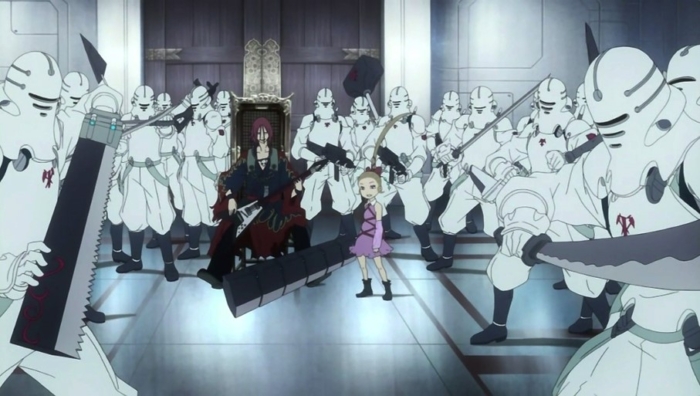
Many of these changes likely stem from the fact that the anime was never completed. The manga provides a much wider range of villains, some of which are more sympathetic or powerful than Genkaku himself. However, most of these villains either don’t appear in the anime at all or, if they do, have roles that are greatly reduced owing to limited time. The writers of the anime may have had to alter Genkaku’s personality and role in order to tailor him into a more appropriate central antagonist. For example, in the manga he and the Undertaker known as Hibana seem to share roughly equal stature among the cast, and both are featured on the cover of the fourth manga volume. In the anime, by contrast, Genkaku is depicted as the Undertakers’ explicit leader, with Hibana clearly operating under his direction.
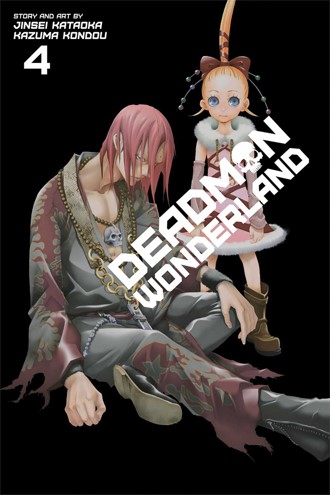
One subtle but significant change the anime makes is that Genkaku uses the word “save” as a euphemism for “kill” much less than he does in the manga. As such, whenever he does use the word “save” to mean “kill,” it feels less gimmicky and a lot more powerful. One of the cleverest such moments occurs towards the end of the last episode, when he says: “Until I’m saved, this is what I do.” Since suicidal people are understood to simultaneously want to die and be rescued 1, and since Genkaku is essentially a suicidally-depressed person who takes out his inner demons on other people rather than himself, the word “save” takes on a very interesting double meaning.
The anime also changes the sequence of events in its last episode in a very interesting way. In the original manga, after Genkaku mortally wounds Nagi, the volume cuts to a flashback of his past, showing how he came to believe that death was salvation in the first place. It then returns to the present time, and Genkaku starts shooting both Deadmen and Undertakers until Ganta is able to defeat him. In the anime, by contrast, Genkaku mortally wounds Nagi, then shoots all the rest of the Undertakers except Hibana (but not the Deadmen) and then the screen cuts to a flashback after Ganta begs Genkaku to stop. The implication is that something about Ganta’s helplessness triggers memories of Genkaku’s own painful past. After returning to the present time, Genkaku never shoots anyone else, but simply monologues about how murdering people is an act of mercy until Ganta stands up to him and, ultimately, beats him. In this version there’s much less to distract from the tragedy of his life and worldview.
Incidentally, this very same episode also humanizes Hibana to a greater extent than the manga does. In the manga, although she seems scared when Genkaku starts killing people haphazardly, she remains on the scene until Ganta defeats him, at which point she, and the surviving Undertakers, attempt to flee from Ganta’s awesome power. In the anime, by contrast, Hibana tries to run away in the middle of Genkaku’s final speech, all while murmuring that “I don’t want to be a part of this anymore.” The implication is that she’s scared of Genkaku, not Ganta or any of the other Deadmen. In any case, Hibana’s reaction here suggests that, despite everything, she actually has somewhat of a conscience, and perhaps could have been rescued and grown up to be at least a halfway-decent person.
The Bonus Episode
People who own the Deadman Wonderland DVD also have the opportunity to watch a never-before-seen bonus episode. This episode focuses on the backstory of Kiyomasa Senji, who is one of the series’ most popular characters. Viewers get to learn about his life as a recruit in the police force and his relationship with the other officers on the force. The episode also introduces a new antagonist named Keigo Ugachi, the only evil Deadman to ever make an appearance, who turns out to be working for the manga-only villain Akatsuki Izakuchi. The episode has little that sets it apart artistically, but it is wildly fun, and provides an interesting new look at the Deadman Wonderland mythos.
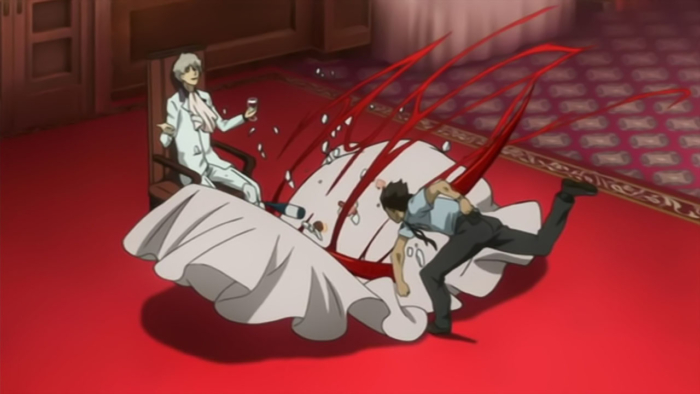
The Power of Sound
Another way in which the Deadman Wonderland anime has the edge over the manga is in its greater freedom with sound. Sounds , such as the song that Shiro sings, Genkaku’s electric guitars, or just the characters screaming and crying, play an absolutely crucial role throughout the series. However, the manga is fairly limited in this regard for the simple reason that no writer can completely capture a sound on a page. The writer and illustrator do make a valiant attempt to capture sounds, through creative speech bubbles and text effects; but none of their efforts compare to the joy of being able to hear what’s going on in the anime. Add to the various sound motifs a pair of captivating opening and ending sequences, to say nothing of a voice cast who’s clearly having a great time, and the sounds of the Deadman Wonderland anime end up being easily one of the most enjoyable things about it.
In conclusion
The anime version of Deadman Wonderland tends to get short shrift in the fandom, largely because it was never completed. Unfortunately, since the studio that produced it went bankrupt 2, a second season will probably never appear unless another studio decides to do a reboot. The risk here is that a reboot might undo many of the changes that made the anime so good in the first place.
The real tragedy is that the rest of the manga could have benefited just as much from Studio Manglobe’s tender loving care as the first couple of arcs. Tamaki, for instance, has a great backstory all his own, which probably could have been just as interesting as Genkaku’s with the right sort of fleshing-out. The same goes for many of the good guys, particularly Hitara, who is arguably one of the most interesting of the manga-only characters. Many of the battle scenes from later volumes would also look fantastic animated. Regardless, fans can console themselves by watching the Deadman Wonderland anime and then picking up the manga in Volume 6 and reading through to the end. They will lose absolutely nothing, and will probably enjoy themselves more in the process.
Works Cited
What do you think? Leave a comment.




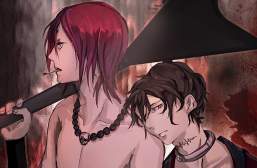
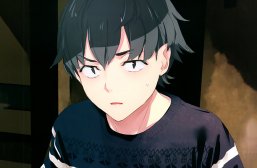

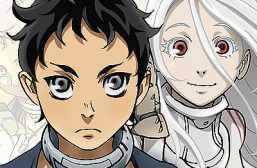
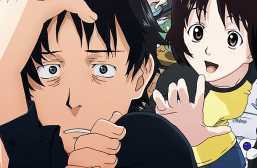
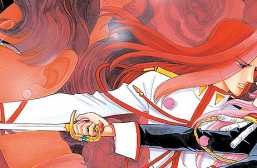
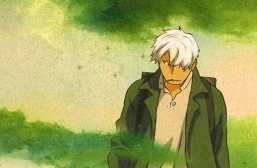
The major problem in the show is the beginning, when the court sentences the mc to capital punishment. Like yeah, he’s the only suspect, but HOW THE HELL THOSE A HIGH SCHOOL KID DESTROY AN ENTIRE CLASSROOM?! How does one kill about 20 people and do that much damage and even destroy the windows and even the window frames in that much short amount of time. Like they didn’t question the damage of the classroom or the way the bodies were sliced up or whatever? No, they just assumed a kid fucked up a class and since he’s the only one who isn’t dead, he must be the one who is guilty? They didn’t think that the mc was smart enough to hide or play dead so the culprit didn’t kill him (although the culprit did notice mc)? I feel like the character actions and emotions were sort of forced just for the plot. The plot is great, it just has LOTS of holes.
Other thoughts: Okay, let’s think logically. Let’s say we’re the judge. Kid fucks up his class and even destroys the room in an instant. Only logical way? A bomb. Yet how does mc survive a bomb when everyone is dead and the room is destroyed and there are no bomb remnants or marks? So there’s no way mc can kill an entire class and destroy a room even with a bomb ’cause mc’d be dead too. What troubles me is how the court system in this anime works.
I agree! Did they like think he had some mental ability to do all that by himself??
For those who watched the anime but didn’t read the manga, I would recommend you all to read the manga. The manga gives all the answers to the unanswered questions in the anime and the manga actually ties up the ending. But the anime is still awesome – good post.
Fans of this series should definitely read the manga. I think they should get their hands on both, and preferably watch the anime first.
After years of watching clips and hearing the hype around this show I finally marathoned it recently and, yeah, it didn’t even really have an ending. It just…stops. And that was so frustrating. I know the manga continues the story but I think the anime shouldn’t have even been made until it was all set and they could animate the entire story.
Also, even though the main events of the plot are mostly good (over the top and silly but still entertaining) the pacing was TERRIBLE. Backstories to villains are given in too-fast flashbacks and then killed literally a few minutes later. And the entire Scar-Chain prison break plot was way too quick and gave no time to get to know anyone well enough to care for them (and though I liked Kariko her getting fake killed like 3 times was cheap and aggravating)
And the ova was wasted potential. Seriously, even if you love Crow, did he really need an entire episode just for his backstory? Who cares about that when the Redman debacle was never even solved? Or who Mockingbird was?
Thing is, the problems you mention with pacing and characterization are, if anything, worse in the manga. The manga introduces a number of characters early on but gives them nothing of any importance to do until the second arc, and every arc has certain characters who appear for that one arc and then are never mentioned again. There’s also a couple of characters who are introduced only toward the very end of the manga, when they couldn’t possibly be developed enough to make the audience care about them. So, whatever problems the manga has with pacing or character development, the anime actually improves on them for the most part (not a lot, but definitely at least a little bit).
Regarding the villain backstories, well, some of the villains really are just that minor, and were given backstories largely to create the illusion of depth. But the reason why they don’t reveal Genkaku’s backstory until the end of the anime is that being sneaky and having something to hide are pretty important parts of his characterization (it’s the same with Tamaki, when his backstory is revealed later in the manga). And, once again, the anime does a much better job of dropping hints about his true intentions than the manga does, although this is only really noticeable if you watch it more than once.
I love any ANIME with less lovey dovey and more badass moments.
I always thought Deadman Wonderland was one of the classics (this was from before I watched anime) and only now just realized it was on Funimation and finished it in four days. And now I’m confused and saddened that it wasn’t as big of a deal that I thought.
I’ve just finished watching this anime myself. As for your analysis, good job. This anime had potential. It has a good story, characters, and music. Also, I love Greg Ayers. The problem it has comes from the fact that it’s a short episode anime. The story is rushed in some areas and there is much that is either unexplained or unrevealed.
This was one of the first anime I watched, I’m somewhat new to the world of anime, and it really opened my eyes to what an anime could be. I absolutely loved this series, which surprised me, because I didn’t think I liked the dark horror genre. But I loved it so much that I read the manga, which, in my opinion, is better than the show because it goes deeper into the characters and it has one more important character that the anime missed, and is clearer with who Shiro is (which is important)
The MC of Deadman Wonderland is almost as big of a b1tch than Shinji from Neon Genesis Evangelion and Kaneki from Tokyo Ghoul though he does have his bad ass moments. The anime was overall good. Not amazing or bad (certainly not fine or mediocre) so the adjective I have left is good.
I don’t know, I just found the show boring. Kind of like DanMachi, where I just didn’t care about any of the characters, their motivations felt generic and flat, and nothing was explained about anything that was going on. The art was nice to look at, it felt movie quality in that respect, but none of the action ever had me on the edge of my seat or even interested in the results.
Their superpowers were similarly lackluster. Cool in concept, but they barely play around with it at all. There’s a guy that makes swords come out of his arms, a guy that makes bullets, a girl that make whips, but what was the difference between any of them besides how they looked? They never use them in any interesting ways and I kept thinking “Could someone PLEASE try to use the blood all over the ground, or prevent themselves from bleeding out or at least do SOMETHING creative with them.”
Manga was amazing, the anime ruined the protagonist from episode 1…
I genuinely enjoyed the series but the main problem I had with it is that IT WAS TOO DAMN DARK. How were you supposed to see what was happening? I know it was meant to be dark but a lot of the time it was so dark you couldn’t see what was happening.
Deadman Wonderland was like Watamote:Good at first, and gradually losing focus. Deadman Wonderland was good, but unfortunately messy, VERY messy.
The Entire time I watched the show, I constantly went “How the Hell did the Government OK this place, how is this not against International law?”.
And the Trial I have actively thought about it constantly, the most damning aspect Being the kid was in the middle of the classroom, there’s no way he could have planned to blow them all up and survive given his positioning. How could he have planned that, and where could he have gotten access to an explosive that could do that.
Like I even tried to for the sake of argument played devil’s advocate and tried to think of possible ways to accomplish that, I could not think of any way that a regular Law Enforcement Officer or Detective could piece together, The Deadmen are the only explanation and the public at large know nothing about them thus that can’t be used in the court.
I get that Japan’s conviction rate is so high that it is blatantly broken and needs SIGNIFICANT reform on a scale I can’t begin to fathom, and I get that the people in the trial were likely bribed, but how could any Jury not have reasonable doubt?
Like the fake video, where’s the guy who he’s talking to, why is he not tracked down for questioning? Is that not an important piece of evidence?
The Entire first episode messes with my OCD significantly (It doesn’t help that I watched TV with my mom alot as a kid, and she frequently watched Court TV and the like which fueled the OCD.).
Like I get the show has a plan and just wants to get to it, but look at that massive paragraph I just typed, That’s what that beginning had me think YEARS AFTER I WATCHED IT. They needed at least 2 entire episodes focused on that alone.
Also the Ending……. that ending.
I hope the Seasonal approach anime has begun taking prevents this kind of ending from happening again.
I really liked the premise of DMW and liked the series up infill the whole rebellion storyline became the focus. It just felt too rushed after that. I would have liked to have seen more of branches of sin users and more of the arena fights even ones not involving Ganta just to see his reactions to having to watch them. Also wouldn’t have minded them prolonging the mystery of who the rotten egg is. But all that said I did enjoy it and I’m kinda hoping for more though I highly doubt it will happen.
I really loved this anime. Most of the characters were very well done for the short series. I was annoyed by Ganta at first but Greg’s portrayal grew on me as the series went on. I really hope Japan makes a second series because it had a very good story and seemed like it stopped right at the height of it’s kinetic energy. Maybe with the US Popularity they will do a second season.
I feel the exact same way, but I suspect it’s just wishful thinking at this point. I’d also be pretty suspicious of a full-blown reboot just because the original anime did so much that was good I’d hate to see it erased (the final showdown with Genkaku in particular is literally what sold me on the entire series in the first place). In an ideal world, another anime studio that’s noted for doing good work would pick up the series where the last anime left off, and continue it through to the end, but I’m not sure if Japanese studios work like that.
Watched the first few episodes and I thought it was gonna be really cool….yeah not so much, pretty big let down. But now Im gonna try to find the manga since everyone says thats good. We’ll see.
I loved deadman wonderland I started reading the manga 1st then later I watched the anime which was also good but sadly cut short personally I kinda wish there was one more vol of the manga or at least one more chapter and last thing the opening holy shit it was so good (tho it censored the uncensored opening shows tits no joke they show shiro boobs I don’t know how to feel about that ngl but still odd thing)
I liked the series as a whole but for me the ending (or lack thereof) really kills it for me.
When the anime first came out, the topic was too dark for me but I’ve heard a lot of positive reviews about the series since. Your article gives me more motivation to watch it but I am still scared!!! >___<
Well that is the one thing to keep in mind about this series, no matter which version you choose: it is really, really violent. And it pulls out all the stops in terms of jamming in as much violent content as it can. Some of the violence is pretty cartoony and over the top (or just plain ridiculous), but there are moments of more realistic violence too–for instance, the anime alone features scenes of a teenage boy being violently beaten and sexually abused, and an orphanage being burned down with the children inside–and some moments that are just plain depressing no matter how you look at it.
There doesn’t seem to be a significant difference in the level of violence between the anime and manga either. The manga has more violence just because it’s longer (prominently featuring, among other things, scenes in which a young woman gets her face burned off and then kills herself, and a little girl is repeatedly cut up, dissected, and stitched back together as part of a scientific experiment), but the presentation of the violence is just as intense in the anime as it is in the manga, and some would say even moreso.
I’m pretty much inured to extreme violence in anime by now and I deal with it from this series because I just like the story and characters (especially Genkaku, who is easily one of my all-time favorite anime villains), and because if nothing else it grabs your attention. But you do have to have a pretty high tolerance for it. Not everyone does, and I respect that.
♡ I love reading your in-depth analytical articles.
This is very thorough and well-written! You have done a great job of analyzing the anime in relation to the manga; the contrasts are very interesting. I particularly enjoyed your focus on world-building and the use of sound. Thank you for sharing this with us!
The manga is AWSOME. Read the manga!! Deadman wonderland anime missed important characters to the story from the manga and that made the anime can’t move on so they had to end it bad.
I really liked this anime, Loved the opening… but I must say this anime verymuch feels like an intro to the manga.
I stayed up watching Toonami for a while back, I was about to fall asleep half hour in but when the show started it sure me the hell up. I saw that slaughterfest and drama that happened in that one episode just drained all the drowsy out of me. Dead man Wonderland is definitely one of the best if not bloodiest and most dramatic animes I’ve ever seen(next to Higurashi when the cicadas cry). It was well worth waiting to midnight to watch this.
i liked this anime but i feel like it left too many questions by the end of the series. like who is shiro? is she like a superhuman? how did she fix her broken legs and how did she and ganta make that super blood bullet thing at the end. and how did mockingbird use invisible black? i thought that each deadman had a different branch of sin and the invisible black was crows. what happened to the redman? i dont think that it ever had closure with him, wasn’t killing the redman ganta’s motive?
I didn’t watch Deadman Wonderland cause some people told me that it wasn’t that good and I’m, not that into the horror anime things. BUT I will watch it now!
If there’s one thing I don’t like about this anime, it’s that they have no idea how to use gore correctly. They use it in unnecessary moments such as taking out Crow’s eye, that reduce it from a horror anime to a gore anime. Horror uses fear of the unknown to scare you, not just mindless bloodshed. Otherwise, the anime’s pretty good ^_^
It’s really strange to watch this now that Manglobe went bankrupt tbh
The problem is that Deadman Wonderman is, just like Mirai Nikki, a manga series. It’s not rare to see plot holes and errors in their anime adaptations.
I read the manga of this, and I’ll say this: don’t wish for more of this. There is never any letting up. There is never a happy moment on its own – every one is there just to make the next awful thing seem more awful in context. The fights have been done better in different shows. And overall, I just didn’t connect with the characters. Ganta just seemed too… bland. Shounen hero bland.
I’m honestly sad they stopped at 12. And that opening is by far one of my favorite openings.
You somehow convinced me into wanting to watch this o.O Although I don’t like the idea that it doesn’t really finish, that’ll bug me later.
I really enjoyed your post on DMW and agree with you most of the time.
The opening is amazing.
Every now and then I look up if a miracle happened and if season 2 is being made. So I’m glad someone is still talking about this great anime. Some how some way, when I blow up, I will make sure to revive this anime.
I don’t like the anime. Stopping at 12 episodes, leaving out important characters from the manga that were suppose to appear in the anime…yeah I’ll stick with the original material (manga). but I struggle to argue against your points – which do make very much sense.
This was the first anime i ever watched, and i’ve always loved it soooooooooooo much. And i really really really appreciate this analysis. Thankies.
I tried to get into this show, I tried, but I couldn’t. It was just too dark and edgy for the sake of being edgy.
I think this was a really good article, and while I’m not a big fan of the horror genre and lots of blood just for the blood, I still think I actually might watch this.
It honestly isn’t just blood for the sake of it, though. That’s what I thought too, until I actually watched the series through to the end.
I blame my sister for introducing me to Ouran Host Club when I was 8 asking me “hey do you think this is a boy or a girl?”
Then I fell down the rabbit hole…
Perhaps if a new studio takes the anime, they could remake the first season, such that it has a clean slate.
I was really amazed by this. I wasnt much into the anime and i couldnt stand watching no more than 6 episodes, but it seems like i´ll finish the series.
Great read, I loved the anime and never got into the manga. Here’s hoping for a season 2.
So you can’t read. That’s okay.
Yup I thought it was pretty good. Not the greatest and the ending is kinda bad IMO, but enjoyable. CSM I like to think is deadman wonderland if it was a masterpiece.